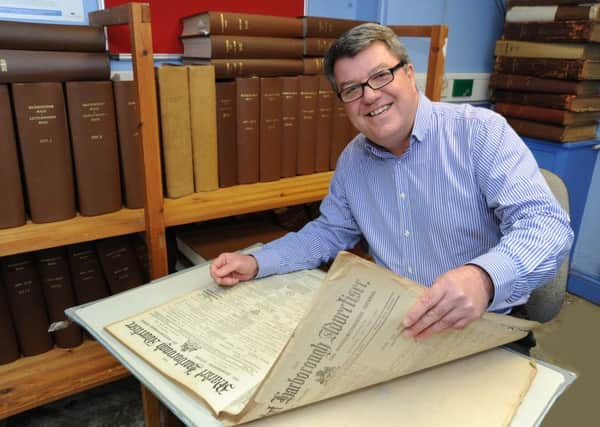John's WWI blog: Death rates fall for babies


The number of infants dying in Market Harborough is falling significantly according to a story in the April 25, 1916, edition of the town’s newspaper, the Advertiser.
The lengthiest article in this week’s paper is the Annual Report of the Deputy Medical Officer to the Urban District Council, which demonstrates the huge changes that are taking place in post-Victorian society.
Advertisement
Hide AdAdvertisement
Hide AdBetter sanitary conditions, improved hygiene and superior medical facilities are all contributing to less illness and fewer deaths in the town – discounting, of course, the slaughter going on in the battlefields.
The Report claims the change is due to the Notification of Births Act which was adopted by the Council in 1910. “The Council provides £40 per annum towards the maintenance of a Health Visitor exclusively for the Urban District.
“The work done by her has been of the greatest benefit to the district, both in helping towards the reduction of infant mortality and in regard to the better management and care of children.”
The Officer continues: “The figures of infant death rate are instructive in this connection: for the four years preceding the adoption of the Act the death-rate per 1,000 births was 98, 78, 68, and 80. Since 1910 the figures have been 55, 58, 57, 96, and 45.”
Advertisement
Hide AdAdvertisement
Hide AdThe Officer says the spike in 1914 was ‘an abnormally high percentage of premature births and of congenitally malformed children’. This was in line with the national average.
The Report also says that Pubic Elementary Schools are kept in ‘good sanitary condition’ and the town’s water supply – from North Kilworth – is of ‘a high standard of purity and is free from all risks of pollution’.
House refuse is ‘scavenged’ by the Council’s carts, the streets are also ‘scavenged and cleansed’ by the Council, and ‘the majority of the houses are provided with water closets – there are no privies’.
Housing for the working classes is ‘very good in the newer parts of the District’ and although there are ‘defects’ in older housing ‘improvements are gradually being carried out’.
Advertisement
Hide AdAdvertisement
Hide AdAll of this seems to have had a knock-on effect for the birth rate which has gradually fallen from 193 births in 1907 to 132 in 1915.
The story takes on even greater prominence in this edition as there are only four pages – half the normal size – because of the ‘short week’ caused by the Easter holidays which changed the normal publication date.
In fact there isn’t a single story about local men fighting in the War. This will surely change in future weeks as the great British push, which later becomes known as the Battle of the Somme, gets underway in the summer months.